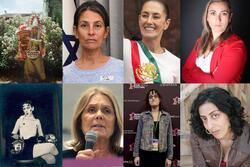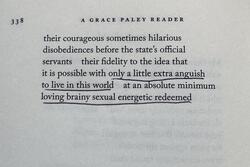Miri Shalem of Beit Shemesh and dance as a tool of social change
Before most of us ever heard of the small town of Beit Shemesh, Miri Shalem the orthodox mother of four children and a long-time resident was directing the town’s JCC. Under her auspices, Haredi women have been exchanging views with modern orthodox counterparts. Miri has been organizing discussion groups for the women of her town using tools for constructive dialogue usually reserved for debates about the Arab-Israeli conflict.
The modern and the ultra-orthodox women of Beit Shemesh have many differences. The ultra-religious are married off as teen-agers, give birth to, raise – and financially support – big families, all the while taking care of housework. Their husbands spend their time in study. The modern orthodox women generally have smaller families, higher education and in many cases, flourishing careers and household help. Their husbands serve in the army and exercise professions. There are many disagreements between the two groups. For example, the moderate women are frustrated by the others’ refusal to protest gender segregation on their local buses. On the other hand, the Haredi women find lots of sympathy when they admit to the arduous drear of their daily lives where so much responsibility and so little gratification is their lot.
Miri does not shrink from daring initiatives. Looking for more non-divisive ways to bring her constituents together she organized women-only dance evenings at the JCC offering all the women, even the most ultra orthodox, an opportunity to move to something other than liturgical music. The dancing went on late into the night and for a short time at least, all the single girls, wives and mothers of Beit Shemesh had agency over their own bodies.
I find myself warming up to Miri as she addresses an American Zionist Movement luncheon in February, 2012, at the Jewish Federation in New York City. She explains how, with the outrageous behavior of some ultra-orthodox men, her town suddenly found itself in the eye of an international storm. To her profound dismay, deeply shocking images of local Haredi men assaulting and spitting on young girls went around the world.
Miri struggled to come up with something to counter all the negativity. It might have been the success of those dance evenings at the JCC that gave rise to her inspired solution. She decided to organize a flash mob to manifest on the main square of Beit Shemesh and perform a collective dance of protest. She hired an experienced producer and the event went viral.
After showing us the clip, Miri tells her luncheon audience that she has “a really wild idea, maybe even a dream.” She wants to start a new political party in Israel, one that would promote gender equality. Wait, there’s more – she feels there is enough subterranean dissent among the Haredi women that she would persuade them – or at least some of them and then gradually more – to participate in this party.
I am electrified. In a recent post I agreed that the only way change can come about in the lives of the ultra-orthodox is via revolution from within the ranks of the oppressed women.
At the end of her talk, I ask Miri if she’s really glimpsed a spark of emerging dissent among the Haredi women. She assures me that she has: Even the woman whose father and eight brothers were founders of the extreme rightist Shas party has confided in Miri her secret longing for change. Shine a light. Miri would begin on the local level, seeking some political leverage to be sure ordinances against such outrages as segregated sidewalks are rigorously enforced. But Miri occasionally allows herself to dream big: If these women no longer vote with their husbands in a uniform block, the ultra religious will lose a lot of electoral clout on the national level and the political landscape of Israel might well undergo a sea change.
To my surprise, not everyone in the room warms to the idea of a new political party. One woman argues that there are already far too many parties and that Miri’s concerns “are social and not political.” I have to muzzle myself not to shout out Steinem’s rallying cry, “The personal is political,” and wish I could conjure Gloria to show Miri the way. Other more supportive women invoke the American suffragettes and assure Miri she should not give up hope. I feel we might just be witnessing a historic moment.
Before leaving, I compliment Miri on the flash mob initiative and share my enthusiasm for dance as a tool of social change. I remind her that the early Zionists used the reinvented Israeli folk dance in an analogous way to unite disparate peoples.
“Start a dancing party,” I encourage her. “Seriously, how much more can we talk? Let’s get the idea across with our own woman bodies.” There was more transpiring between us in that moment than banter and newfound camaraderie.
Beit Shemesh means the home of the sun. Who’s to say that the site of a festering sore won’t soon be bringing us rays of a new dawn?
This was originally posted on From the Twisted Fringe, reposted with permission.





